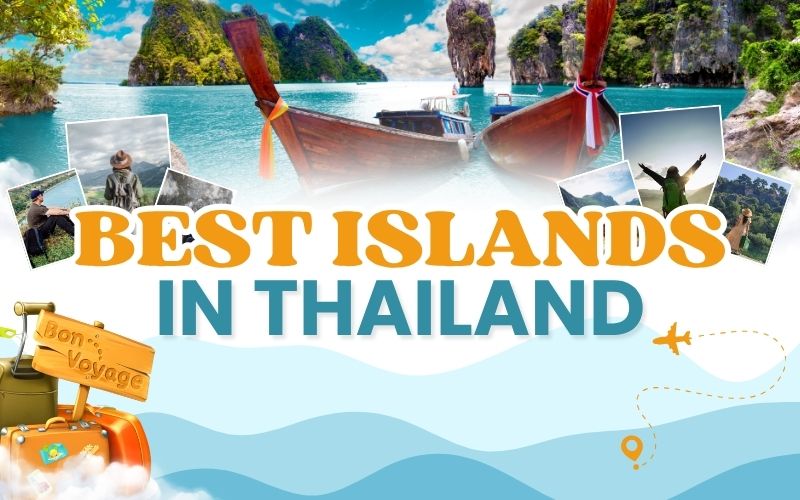
Which islands in Thailand should you visit first? The country is blessed with some of the most beautiful tropical islands in the world, from vibrant beach towns to quiet retreats, the decision can be overwhelming. Each island has its own charm, some are perfect for diving, others for nightlife, and many are just for relaxing on quiet shores. In this guide, I’ll take you through the best islands in Thailand to visit, share what makes each one special, and offer practical tips to help you plan your trip. Whether you’re looking for adventure, romance, or pure relaxation, there’s a Thai island waiting for you.
Overall of islands in Thailand
Aside from the iconic golden temples, when it comes to Thailand, the first image that comes to mind for most visitors is of stunning tropical islands, with some of the world’s best beaches and an ideal diving spot. The country is blessed with over 1,400 islands, scattered across the Andaman Sea to the west and the Gulf of Thailand to the east. Locals call them “Koh” (meaning “island” in Thai), and each island has its own unique character. What makes Thailand’s islands unique compared to other countries is the variety you can experience in just one trip. From vibrant party hubs to unspoiled retreats, each island will offer you a unique experience.
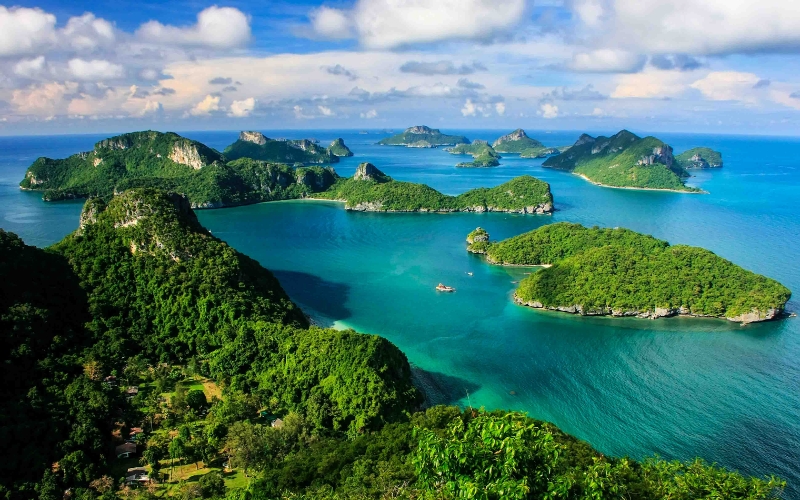
Aerial view of Thailand’s tropical islands scattered across turquoise seas
Another interesting fact I learned from the local fishermen is that some islands are so small that they are just rocky outcrops that you can only see during the day, while others like Phuket are so large that they are like separate provinces, with their own airports, highways, and bustling cities. Having been to quite a few islands, I can confirm that each one offers a different vacation experience. The diversity is amazing; you can go from an upscale beach club to a quiet fishing village, all within a few hours ferry ride. It’s no wonder why island hopping in Thailand is so popular with tourists.
Best time to hop on an island tour in Thailand
One of the most important things when planning an island hopping trip in Thailand is timing. I’ve experienced both the picturesque dry season and the unpredictable monsoon season, and trust me, knowing when to go can make or break your trip.
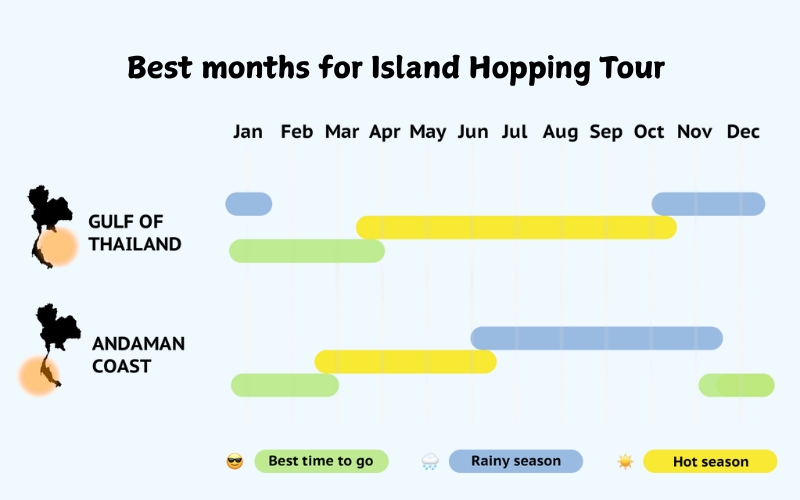
Climate chart comparing the Andaman Sea and Gulf of Thailand, showing the best months for island-hopping
The dry season (November to April) is definitely the best time to explore most of Thailand’s islands, especially those in the Andaman Sea such as Phuket, Phi Phi, Koh Lanta and Koh Lipe. During these months, the skies are clear and sunny, the seas are calm, and there’s no rain. You’ll enjoy turquoise waters and white sand beaches, and you’ll be gliding across the limestone islets in iconic long-bow boats. This is also peak season, though, so be prepared for crowds and higher prices. Personally, I like to come here in December, the evenings are quite cool to walk around the island and it is not as crowded as around January to February.
In contrast to the dry season, the monsoon season (from May to October) can have unexpected rains, even tropical storms, making trips to the island bumpy and sometimes even having to be canceled for safety reasons. However, there are still sunny days mixed in, this is also the low season so the islands will be quiet and services are cheaper and more preferential.
> > > And if you’d love to explore these paradise islands at the right time without worrying about the details, our specially crafted Thailand island tours are the perfect way to combine sun, sea, and culture into one unforgettable journey.
Best islands in Thailand to visit
Phuket
As the most famous island in Thailand, Phuket is the first destination that most visitors consider when planning an island trip to Thailand. Phuket is the largest and most developed island in the country, with everything from luxury resorts, stunning beaches, hidden coves and easy access, with both an airport and a highway.
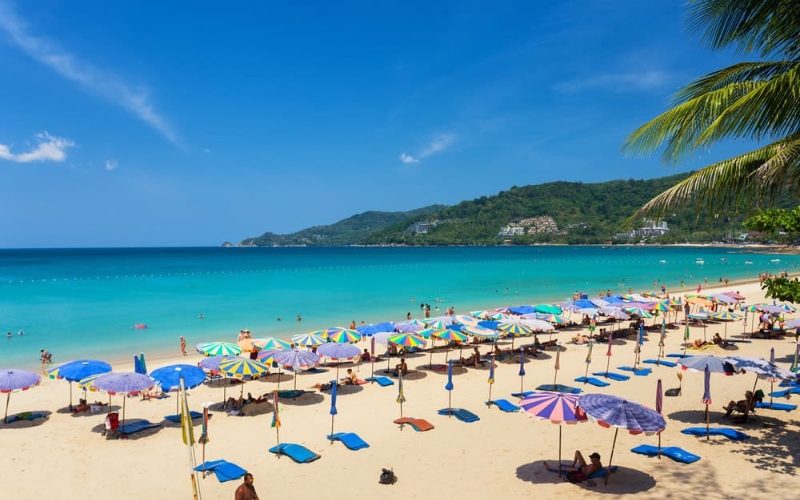
Patong Beach, Phuket’s most famous stretch of sand
When I first arrived, I thought it would be all party beaches and crowded resorts, but Phuket surprised me. Patong Beach is the most famous beach on the island, awash with neon lights and endless nightlife, but just a short walk away you will find quieter beaches like Nai Harn or Kata Noi, which are still unspoiled and have a much slower pace of life.
Besides the beaches, Phuket has many other attractions such as the Big Buddha, the brightly decorated Wat Chalong temple, and Phuket Old Town with its Sino-Portuguese houses, colorful murals and vibrant night markets. The most memorable experience of my trip was watching the sunset from a clifftop bar at Promthep Cape, a spectacular view from one of the best sunset spots in Thailand.
Best for: First-time visitors, couples and groups of friends looking for a combination of beaches, culture and nightlife.
How to get there: You can travel by plane with direct flights from Bangkok, Singapore, Kuala Lumpur and even Europe. From the airport, you can continue to travel by taxi, minibus or private shuttle to the hotel. If you are coming from nearby Krabi or Phi Phi, you can travel by ferry and speedboat.
Pro tips:
- It’s best to avoid visiting during peak season from December to January and during the summer holidays from July to August. Not only are they more expensive, they can also be quite crowded.
- Save money by using local buses (called songthaews), which are much cheaper than taxis, but you’ll need to agree on a price before you get on.
> > > And if exploring Phuket has already sparked your wanderlust, our 7 Days Package to Phuket Town is the perfect way to dive deeper, combining iconic beaches, cultural treasures, and authentic local experiences into one unforgettable week.
Koh Phi Phi
Koh Phi Phi is one of our favorite places in Thailand. Although it is quite touristy and can be crowded, the natural scenery is stunning. Towering limestone cliffs rise straight out of turquoise waters, long-tail boats bob in the waves, and palm-fringed beaches. The island is large enough to have a wealth of bars, restaurants, and entertainment, but there are also quieter corners with luxury hotels and private beaches. Spend your days exploring nearby caves, monkey-filled beaches, and the famous Maya Bay, a dive site teeming with marine life. At night, join the party scene with beach bars, fire shows, and music that last until dawn.
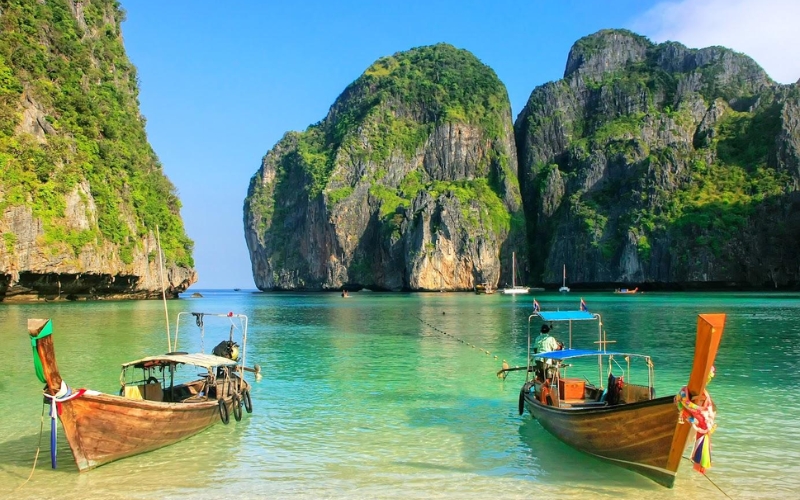
Traditional Thai long-tail boats lined up along the shore of Koh Phi Phi
Best for: Everyone, whether you are a first-time visitor to Thailand, a young traveler, or a couple or family.
How to get there: There is no airport on Koh Phi Phi, so the only way to get there is by boat. Most visitors start from Phuket or Krabi, both of which have airports and are well connected to Bangkok. From there, you have to take a ferry or speedboat to get to the island.
Pro tips:
- Stay overnight if you can. While you can still explore the island in a day, it will be a bit rushed and staying overnight will also give you a chance to experience the nightlife.
- Cars are not allowed on the island, so plan on walking, or you can rent a bicycle or motorbike for the day to explore more conveniently.
- Don’t miss Maya Bay and the surrounding lagoons. They are always crowded, so try going early in the morning for more quiet and privacy.
Koh Samui
Along with Phuket, Koh Samui is the most popular Thai holiday destination for tourists, especially for extended beach holidays. While there aren’t many attractions, most people come here for the beautiful beaches and resort atmosphere. It’s the largest of the Gulf Islands and offers a little bit of everything: palm-fringed beaches, bustling night markets, luxury resorts, and quiet corners where you’ll feel like you’ve discovered your own slice of paradise. On my most recent trip, I was surprised by the island’s great balance – you can party all night in vibrant Chaweng, or relax in a quiet yoga retreat or beachside bungalow. It’s this combination that makes Koh Samui a favorite among couples, families, and even solo travelers.
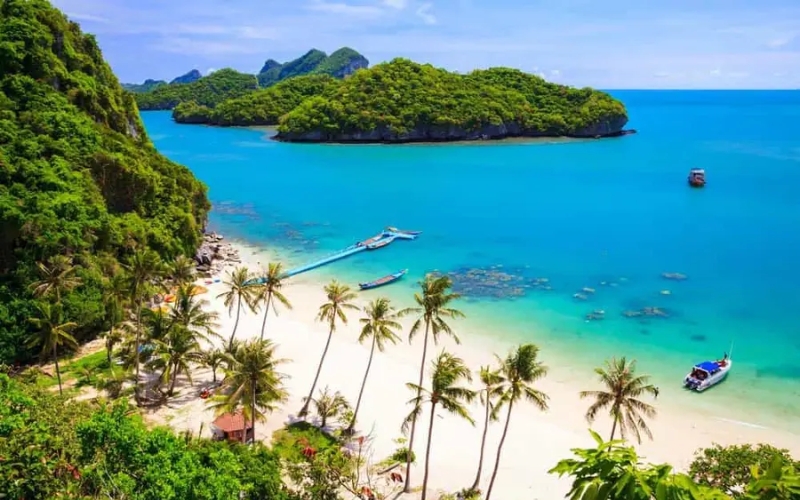
Golden sands and turquoise waters, the perfect welcome to Koh Samui
Best for: Couples, families, and older travelers. This is the place to be if you are looking for luxury resorts with world-class spas, romantic getaways, or a family-friendly stopover with plenty of activities.
How to get there: Getting to Koh Samui is simple as it has its own airport with daily flights from major cities like Bangkok, Phuket, and even international destinations like Singapore and Hong Kong. You can then catch a bus or taxi to your accommodation. You can also take a ferry from neighboring islands like Koh Phangan and Koh Tao.
Pro tips:
- Koh Samui is more expensive than most other islands in Thailand. Budget a little extra for your trip and be prepared to spend more on drinks and food.
- Koh Samui has a different climate than the Andamans, but you can still visit all year round as its rainy season starts later, around October to December.
Koh Tao
Despite being one of the smallest islands on our list, this is a hidden paradise away from the tourist hub of southern Thailand. It feels like it was built for beach and ocean lovers, so it still attracts plenty of tourists and holidaymakers – just less crowded. I still remember the first time I stepped off the ferry, the island looked small and quiet and less developed than its neighbors like Koh Samui or Koh Phangan, but the atmosphere was incredibly friendly. Life here revolves around the sea, which is world-famous for its vibrant coral reefs and rich marine life. I saw schools of reef sharks, barracudas, and even a turtle leisurely swimming by.
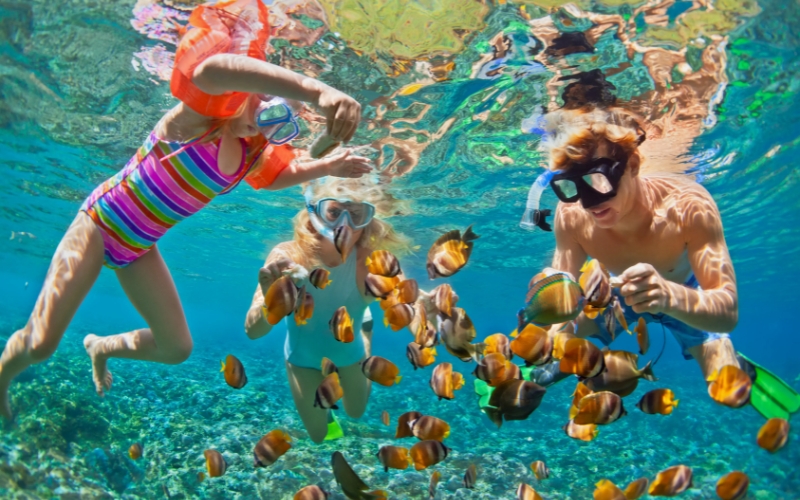
Koh Tao is Thailand’s diving capital, offering vibrant coral reefs and abundant marine life
If you’re not into diving, you can relax on beautiful beaches like Ao Leuk and Sai Nuan, try your hand at kayaking or water sports, or venture around the island to see some great sunset spots. Ko Tao is quieter at night, but you’ll still find some lovely seaside restaurants and beach bars open late into the night, which can get crowded depending on the season.
Best for: Travelers who want to relax and enjoy a friendly atmosphere. The island is also a great diving destination for beginners who want quality, affordable diving lessons.
How to get there: Koh Tao doesn’t have its own airport, so the easiest way to get there is to fly to Koh Samui or Surat Thani, then transfer by ferry or catamaran to the island. From the ferry terminal, you can either walk or catch a bus from the ferry terminal to the resort, depending on where you’re staying.
Pro tips:
- Ko Tao is the best place in Thailand for diving and it’s affordable. Make diving or snorkelling a priority in your itinerary. But be sure to choose a reputable and safe operator and book well in advance during peak season as they fill up fast.
- The island has a variety of resorts inland, especially the luxury mountain retreats. We recommend staying close to the beach. There are plenty of accommodation options to suit all budgets and you’re within walking distance of shops, restaurants, bars and the beach.
Koh Chang
Koh Chang, also known as “Elephant Island” because of its elephant-shaped headland, is Thailand’s second largest island and is often overlooked by tourists, so it feels very different from the hustle and bustle of Phuket or Koh Samui.
What I love most about Koh Chang is that it is not yet commercialized, it still retains its wild atmosphere with lush rainforests, cascading waterfalls and beaches that are not too crowded with tourists. It is the perfect combination of adventure and relaxation, especially if you are looking for something less noisy and more authentic. Imagine hiking through the jungle trails in the morning, swimming under the waterfalls in the afternoon and ending the day watching the sunset over the sea from a quiet beach bar.
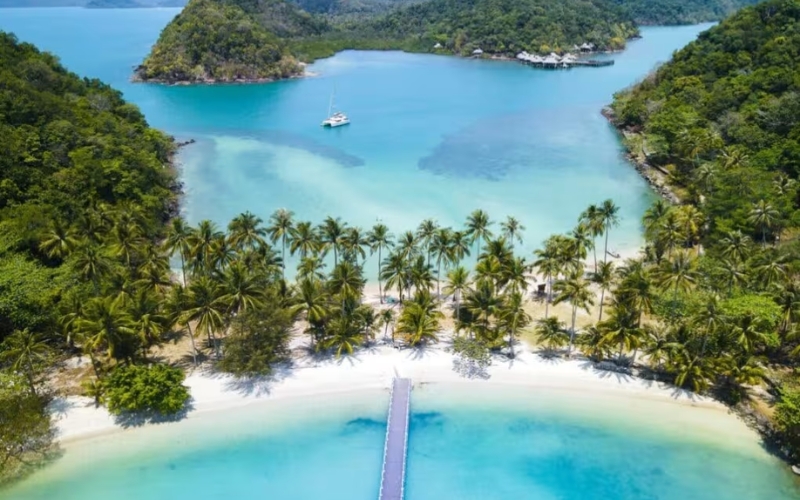
Koh Chang’s blend of jungle and beach makes it one of the most diverse islands
Best for: travelers looking for a quieter and more affordable option, nature lovers with hiking and trekking trips through the rainforest.
How to get there: Koh Chang doesn’t have its own airport, which is part of the reason it’s so little known. The easiest route is to fly from Bangkok to Trat Airport (around 1 hour), then take a short taxi ride to the ferry terminal. Ferries to Koh Chang run regularly and only take around 30–45 minutes. If you want to go entirely by road, buses and minivans from Bangkok also connect to the ferry terminal, but the journey is longer (5–6 hours).
Pro tips:
- While the dry season is of course the best time to visit, if you don’t mind the occasional shower, you can visit the island during the rainy season, which makes the waterfalls more dramatic and the landscape more lush, making it a great spot for nature-loving travelers.
- Don’t forget to bring bug spray and long sleeves, as the forests and waterfalls are beautiful but can be infested with bugs and mosquitoes.
- The most convenient way to get around is by tram, but be careful as the path can be slippery due to moss and wind.
Koh Lanta
Koh Lanta is one of the least visited islands in Thailand, but in my opinion, it is one of the most beautiful. Unlike the bustling energy of Phuket or the party scene of Koh Phi Phi, Koh Lanta feels slower, more peaceful and more intimate. What makes Koh Lanta special is its balance. The beaches here stretch for miles, and you will still find plenty of lively bars and restaurants, but not too many.
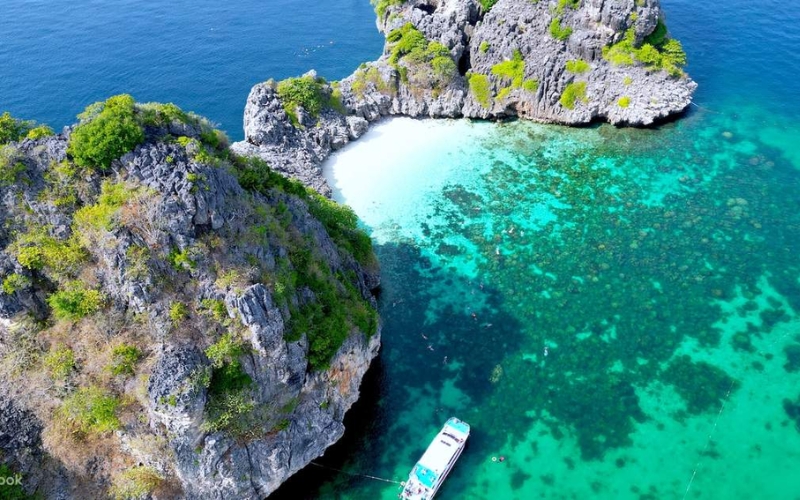
Koh Lanta is a great base for island-hopping adventures across the Andaman Sea
It is also one of the most culturally rich islands on our list, with well-preserved local towns and a distinctly local way of life. Spend your days on Ko Lanta exploring the beautiful beaches by motorbike, wandering around the old town to learn about the local history and culture, and taking tours to the smaller islands nearby.
Best for: Suitable for families, couples and solo travelers. Divers and snorkelers because Koh Lanta is close to some of Thailand’s best diving spots, including Koh Haa and Hin Daeng.
How to get there: Getting to Koh Lanta is easier than you might think. Fly directly to nearby Krabi International Airport, then take a minivan or private transfer, including a short ferry ride to the island. During peak season (November–April), there are direct ferries from Phuket, Koh Phi Phi, and Ao Nang, making it easy to incorporate Koh Lanta into your island-hopping itinerary.
Pro tips: Give yourself more time on the island, maybe 3 days. Trust me, Koh Lanta has a way of slowing you down, you’ll wish you gave it at least 4–5 days.
Koh Lipe
Often referred to as the Maldives of Thailand with its powdery white sands that crunch underfoot and crystal clear waters, Koh Lipe is a little gem in the Andaman Sea. I first visited over a year ago over Christmas and was blown away by its beauty and scale. The water is incredibly clear, shifting between turquoise and deep blue, and you can actually wade out from the beach and start snorkeling amongst the colorful coral reefs.
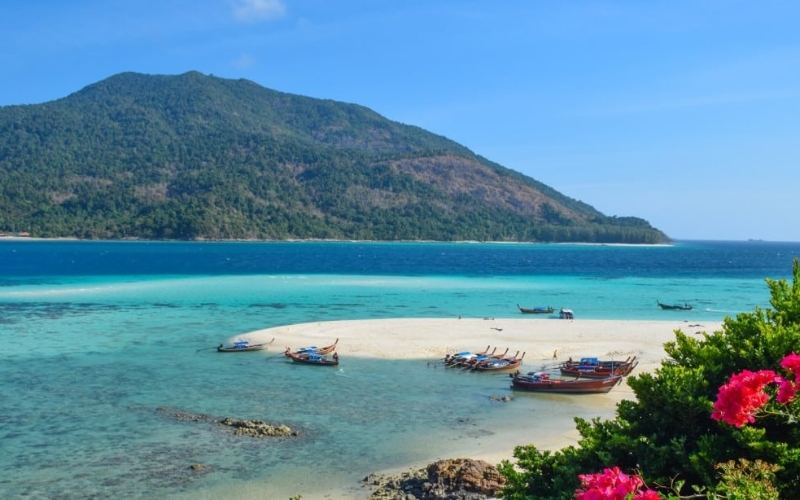
Koh Lipe, the Maldives of Thailand
The laid-back and romantic atmosphere makes it particularly popular with couples and honeymooners. The island is also a haven for divers and snorkelers, with some of the best diving spots in the Andaman just a short boat ride away. At night, Walking Street comes alive with cozy bars, seafood grills and local shops, providing just enough atmosphere without overwhelming the island’s laid-back charm.
Best for: Honeymooners and couples, beginner divers, travelers looking for privacy and tranquility.
How to get there: The most popular way is to fly to Hat Yai or Trang, then take a minivan or bus to Pak Bara Pier, then take a speedboat (about 90 minutes) to Koh Lipe. During the high season from November to April, you can also find direct speedboats from Langkawi (Malaysia), Phuket or Koh Lanta.
Pro tips:
- Stay at least 3–4 nights. The journey to get here takes time, so it’s worth slowing down and making the most of it.
- Bring cash as many shops don’t accept cards, and ATMs are limited on the island.
> > > If Koh Lipe’s turquoise waters and laid-back charm sound like your dream getaway, our carefully designed Koh Lipe 8 Days Vacation package will let you soak in its beauty at a relaxed pace, combining pristine beaches, snorkeling adventures, and plenty of time to unwind in paradise.
Koh Phangan
When most people think of Koh Phangan, they immediately think of the famous Full Moon Party, one of the world’s biggest beach parties, which attracts visitors to dance until dawn under the full moon. But what surprised me when I visited was that there’s much more to Koh Phangan than just the party scene. Koh Phangan is located just north of Koh Samui and is Thailand’s fifth largest island. It used to be known as a hippie and backpacker haven with plenty of cheap accommodation. But that’s all changing.
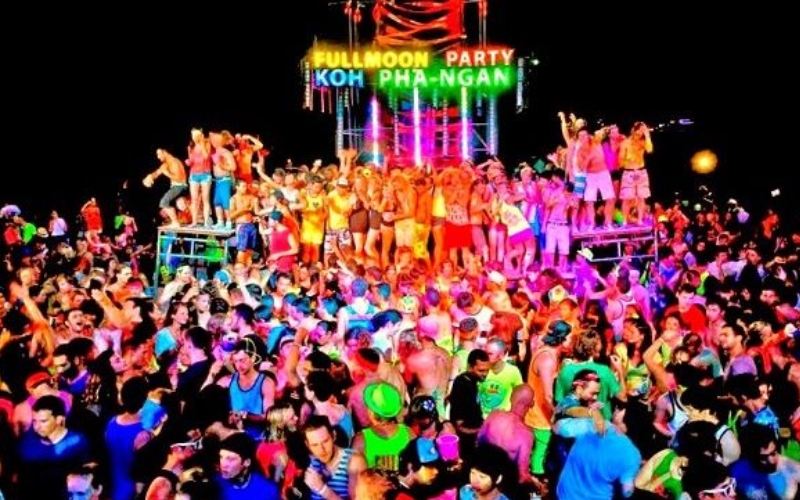
The world-famous Full Moon Party lights up Koh Phangan’s Haad Rin Beach
Head north and west of the island and you’ll find quiet beaches lined with coconut trees, and eco-resorts perfect for relaxing. It’s a great way to wake up early for a yoga class or a Thai massage in a place where most people think of only wild nights. For me, it’s that contrast that makes Koh Phangan special – you can party all night in Haad Rin one night and sip fresh coconuts on a peaceful beach the next morning.
Best for: Koh Phangan is a top choice for backpackers, relaxation seekers and couples looking for a mix of fun and tranquility.
How to get there: Koh Phangan doesn’t have an airport, but it’s easy to get to. You can book a flight to Koh Samui Airport, then take a ferry to the island, which takes about 30–45 minutes. Another budget option is to fly to Surat Thani on the mainland and continue by bus and ferry, but it’ll take about 4–5 hours longer.
Pro tips:
- If you want to join the famous Full Moon Party, plan ahead and book your flights and hotel rooms at least a month in advance as they fill up fast.
- If you want a quieter and more relaxing experience, visit before or after the party.
- The roads are quite rough, in my opinion renting a motorbike is the best way to explore the island, but be a little careful to avoid falling off.
Koh Kood
If you love the quiet of an island untouched by mass tourism, Koh Kood is the island for you. It is often called the last untouched island in Thailand. When I first arrived, I felt like I was transported to Thailand decades ago – long white sand beaches, clear turquoise waters and swaying coconut palms. Even on the most popular beaches like Ao Tapao or Ao Noi, you will see few people.
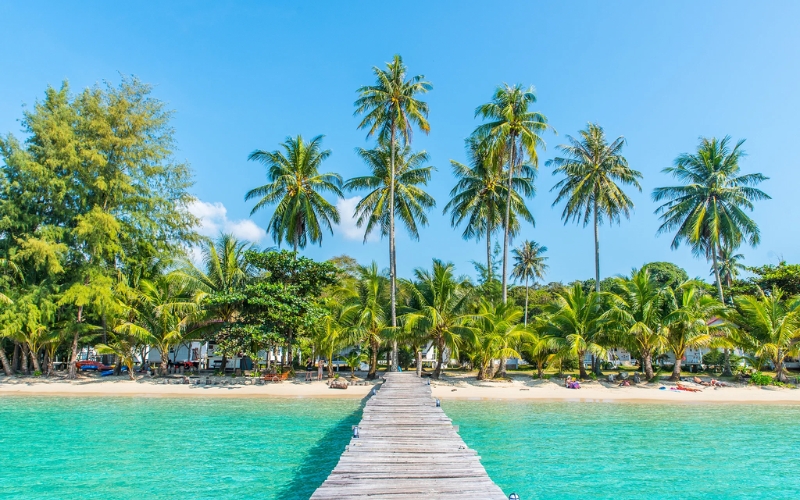
Koh Kood, one of Thailand’s last untouched island paradises
Unlike Phuket or Koh Samui, there are no shopping malls or bustling nightlife. The atmosphere here is luxurious and laid-back – there are some beautiful boutique resorts, but also simple bungalows where you can wake up to the sound of the waves. Swim in the peaceful bays, kayak through the mangroves and enjoy fresh seafood at the beach huts.
Best for: Couples and honeymooners looking for privacy and romance. Travelers who want to get away from the crowds and immerse themselves in nature.
How to get there: Getting to Koh Kood can be a bit of a hassle, but trust me, it’s worth it.
- By air: Take a one-hour flight from Bangkok to Trat Airport. From there, take a 30-minute ride to Laem Sok Pier, and a 60–90-minute speedboat ride to Koh Kood.
- By bus/van: Budget travelers can take a bus or van from Bangkok’s Eastern Bus Terminal (Ekkamai) to Trat, then transfer to Laem Sok Pier to board a boat.
Pro tips:
- Book your ferry tickets at least 1 month in advance, especially during peak season as there are not many ferries here and they will sell out quickly
- There are not many ATMs on the island, so to ensure your payment is not interrupted, bring cash with you.
> > > If exploring just one or two islands leaves you wanting more, our carefully designed Thailand Beach Holiday 18 Days takes you across the country’s most stunning coasts and islands, combining relaxation, culture, and adventure into one unforgettable journey.
Essential tips for your trip
Before you pack your bags and hop on the ferry, here are some essential tips I’ve picked up from my travels – practical advice that will help you avoid common mistakes and make the most of your island adventure.
- Choose the right time to travel: Timing is always one of the most important factors when it comes to island hopping in Thailand, no matter which island you’re visiting. I visited the Andaman Islands in August and spent more time avoiding the rain than lounging on the beach. The weather really does make a difference. The perfect time for island hopping is between November and April if you’re heading to Phuket, Phi Phi or Koh Lanta. If your trip falls during the rainy season (May-October), consider the Gulf of Thailand islands like Koh Samui, Koh Phangan or Koh Tao as they tend to have better weather conditions during that time.
- Getting around the islands: Getting to the islands isn’t too difficult, but it does require some planning. Speedboats and ferries are the main ways to get between islands. On larger islands like Phuket, I often rent electric scooters to get around, which are cheap and convenient for exploring small nooks and crannies. But if you’re not confident driving, you can try taxis and tuk tuks, although they’re a bit more expensive.
- Pack your bags: Don’t pack too much or too little, just bring enough for the trip, such as clothes, swimwear, and essentials like sunscreen, bug spray, etc., which are still available on the islands but are much more expensive than on the mainland.
- Safety on the water: Safety on boats in Thailand is basic. Always wear a life jacket, even if the locals don’t. Avoid swimming after dark or in rough seas as it can be dangerous with strong currents. If you rent a motorbike, check the brakes and headlights, and wear a helmet as accidents are common, especially in remote areas where there are no street lights or where the roads are slippery.
- Travel insurance is a must: Motorbike accidents, food problems or diving incidents can happen to even the most careful of travelers. Make sure your insurance is comprehensive, covering water sports, diving and motorbike rentals, as these are popular activities on the island.
- Payment methods: Cash is always the most convenient way to pay on the island, due to the geographical location, paying by bank transfer or card can be difficult. However, I recommend exchanging money at ATMs on the mainland for a cheaper exchange rate.
- Protect the natural environment: The beauty of the islands depends heavily on preserving the natural landscape. When visiting beaches and marine parks, be mindful of your impact on the environment. Use environmentally friendly recycled materials and do not litter, avoid using plastic bottles if you go scuba diving or lying on the beach.
With this list of the best islands to visit in Thailand, hopefully you have a clearer idea of where you want to explore. Each island has its own charm, and the real magic comes from finding the ones that best suit your travel style. If you’re ready to turn these ideas into your own Thailand island adventure, we’d love to help. Contact us today and let’s plan a trip filled with sun, sea, and unforgettable memories.
Read more:
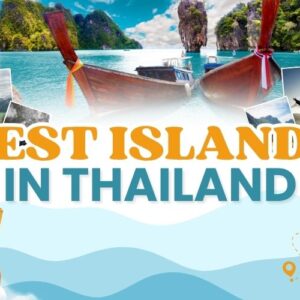
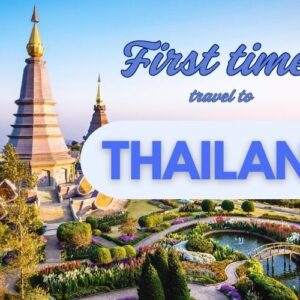
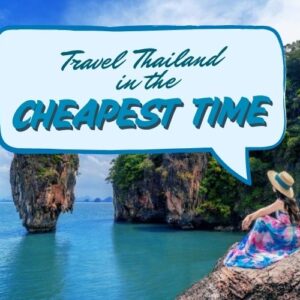
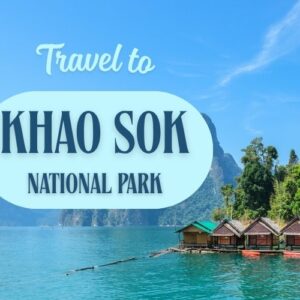
Are the islands safe for solo travelers?
Totally. Thailand is one of the easiest places in Asia for solo travel. Locals are friendly, and other travelers are everywhere. Just use common sense — don’t leave valuables unattended on the beach, wear a helmet if you rent a scooter, and avoid swimming at night. Other than that, it’s all smiles and sunshine.
Can you answer me, please? How long should I spend on each island?
I’d say at least 3 nights per island if you want to relax and actually feel the vibe. Some people rush through, but that’s like speed-dating paradise — you’ll barely remember names! I usually plan a week for 2–3 islands: one busy island for fun, one chill one for recovery, and one for diving or exploring nature.